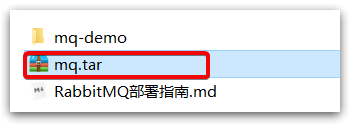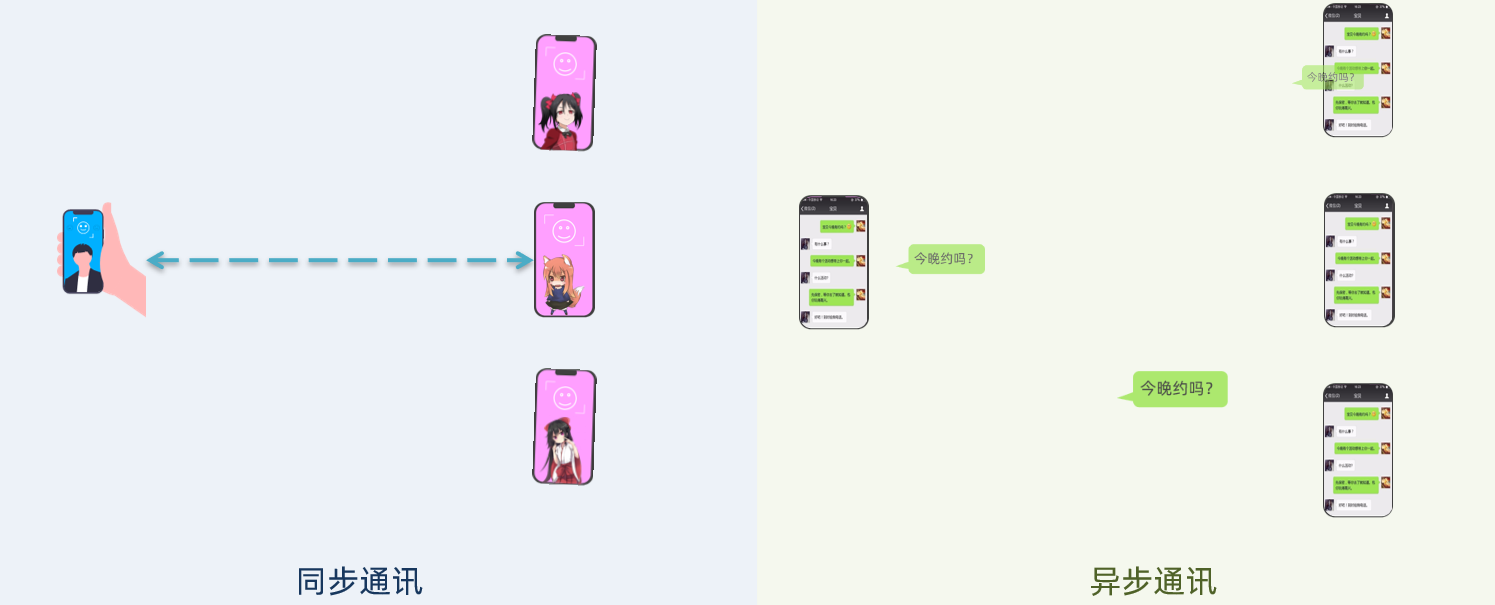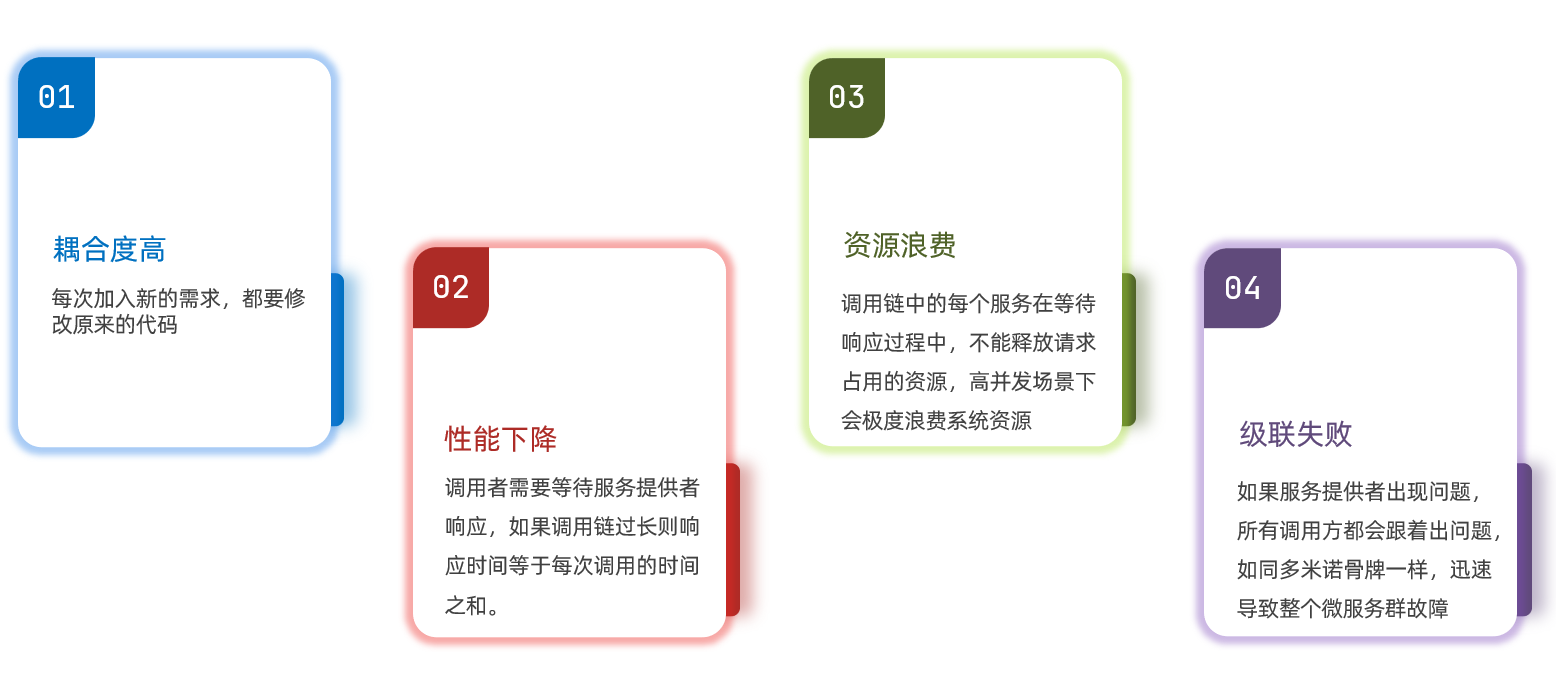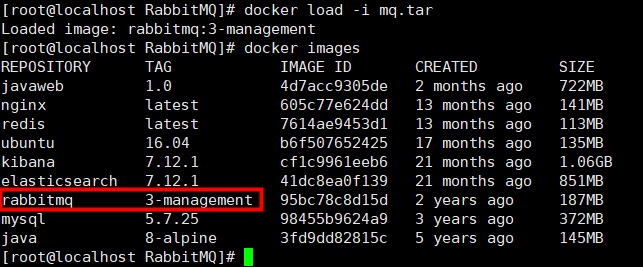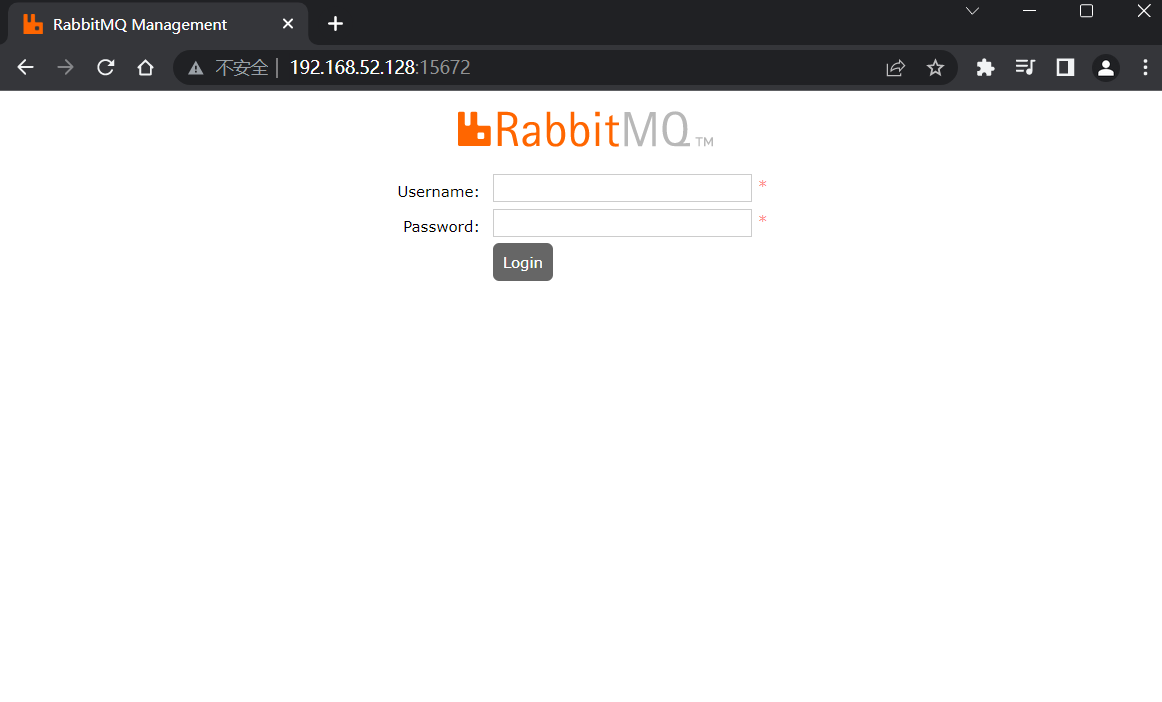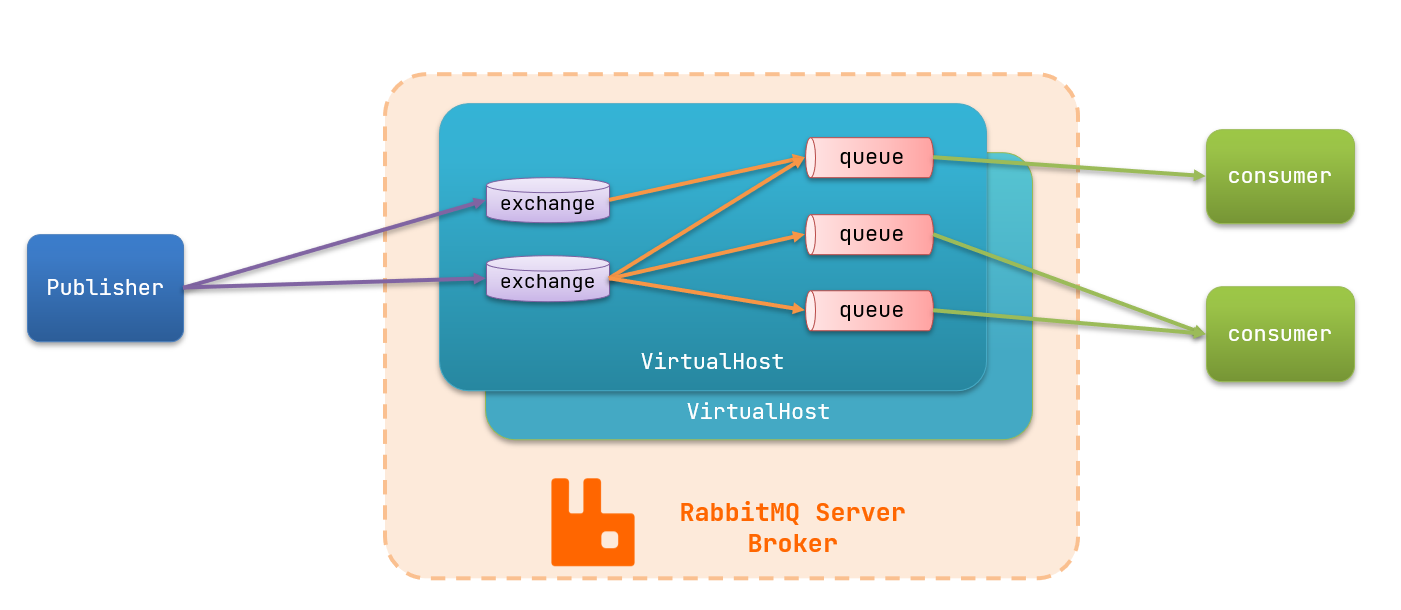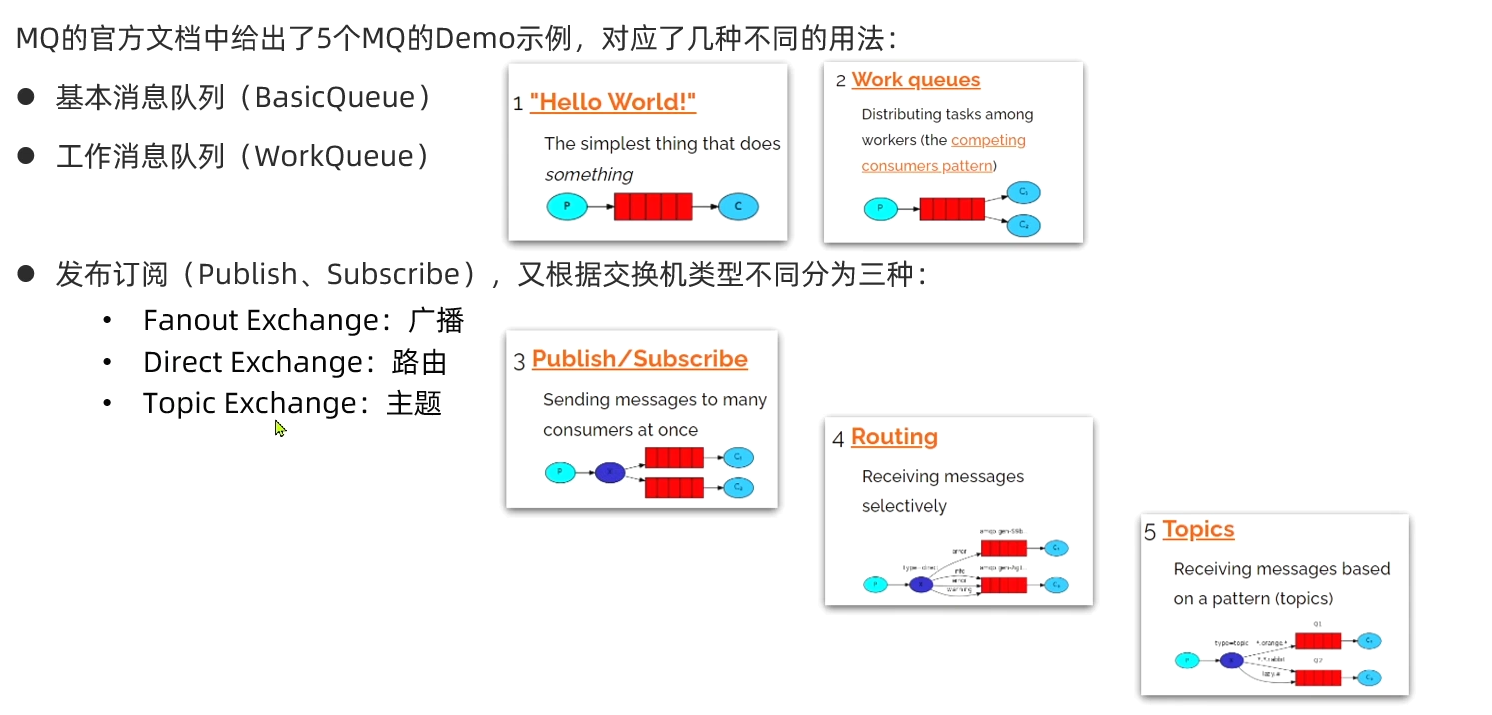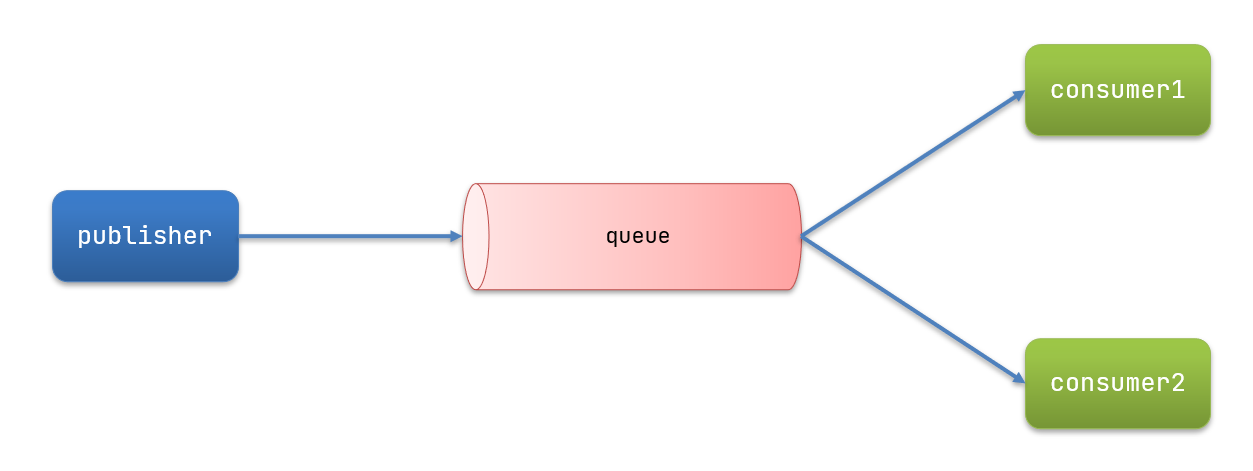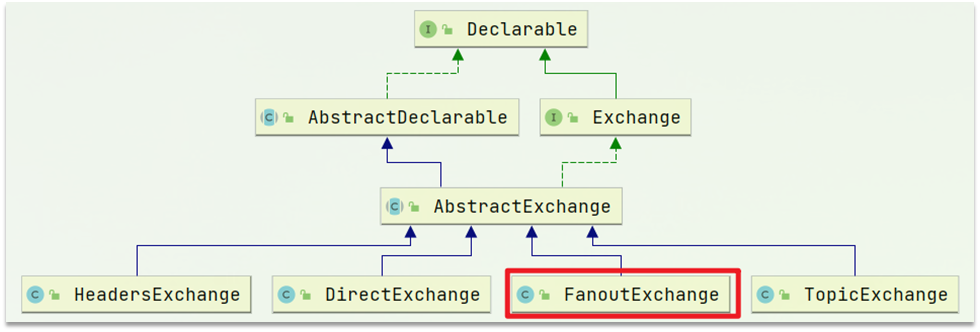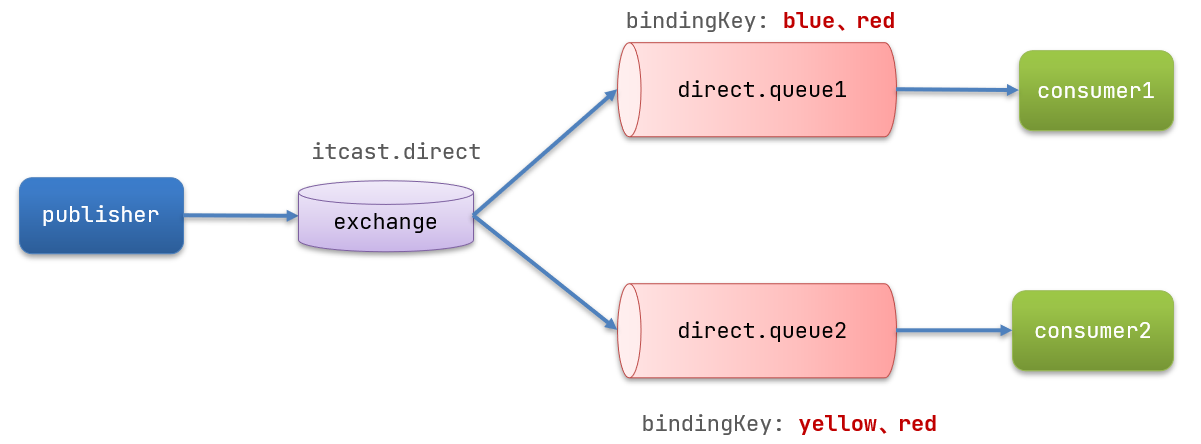初识MQ
同步和异步通讯
微服务间通讯有同步和异步两种方式:
同步通讯:就像打电话,需要实时响应。
异步通讯:就像发邮件,不需要马上回复。

两种方式各有优劣,打电话可以立即得到响应,但是你却不能跟多个人同时通话。发送邮件可以同时与多个人收发邮件,但是往往响应会有延迟。
同步通讯
我们之前学习的Feign调用就属于同步方式,虽然调用可以实时得到结果,但存在下面的问题:

总结:
同步调用的优点:
同步调用的问题:
- 耦合度高
- 性能和吞吐能力下降
- 有额外的资源消耗
- 有级联失败问题
异步通讯
异步调用则可以避免上述问题:
我们以购买商品为例,用户支付后需要调用订单服务完成订单状态修改,调用物流服务,从仓库分配响应的库存并准备发货。
在事件模式中,支付服务是事件发布者(publisher),在支付完成后只需要发布一个支付成功的事件(event),事件中带上订单id。
订单服务和物流服务是事件订阅者(Consumer),订阅支付成功的事件,监听到事件后完成自己业务即可。
为了解除事件发布者与订阅者之间的耦合,两者并不是直接通信,而是有一个中间人(Broker)。发布者发布事件到Broker,不关心谁来订阅事件。订阅者从Broker订阅事件,不关心谁发来的消息。

Broker 是一个像数据总线一样的东西,所有的服务要接收数据和发送数据都发到这个总线上,这个总线就像协议一样,让服务间的通讯变得标准和可控。
好处:
吞吐量提升:无需等待订阅者处理完成,响应更快速
故障隔离:服务没有直接调用,不存在级联失败问题
- 调用间没有阻塞,不会造成无效的资源占用
- 耦合度极低,每个服务都可以灵活插拔,可替换
- 流量削峰:不管发布事件的流量波动多大,都由Broker接收,订阅者可以按照自己的速度去处理事件
缺点:
- 架构复杂了,业务没有明显的流程线,不好管理
- 需要依赖于Broker的可靠、安全、性能
好在现在开源软件或云平台上 Broker 的软件是非常成熟的,比较常见的一种就是我们今天要学习的MQ技术。
技术对比
MQ,中文是消息队列(MessageQueue),字面来看就是存放消息的队列。也就是事件驱动架构中的Broker。
比较常见的MQ实现:
- ActiveMQ
- RabbitMQ
- RocketMQ
- Kafka
几种常见MQ的对比:
|
RabbitMQ |
ActiveMQ |
RocketMQ |
Kafka |
| 公司/社区 |
Rabbit |
Apache |
阿里 |
Apache |
| 开发语言 |
Erlang |
Java |
Java |
Scala&Java |
| 协议支持 |
AMQP,XMPP,SMTP,STOMP |
OpenWire,STOMP,REST,XMPP,AMQP |
自定义协议 |
自定义协议 |
| 可用性 |
高 |
一般 |
高 |
高 |
| 单机吞吐量 |
一般 |
差 |
高 |
非常高 |
| 消息延迟 |
微秒级 |
毫秒级 |
毫秒级 |
毫秒以内 |
| 消息可靠性 |
高 |
一般 |
高 |
一般 |
追求可用性:Kafka、 RocketMQ 、RabbitMQ
追求可靠性:RabbitMQ、RocketMQ
追求吞吐能力:RocketMQ、Kafka
追求消息低延迟:RabbitMQ、Kafka
快速入门
安装RabbitMQ
单机部署
我们在Centos7虚拟机中使用Docker来安装。
启动docker
下载镜像
方式一:在线拉取
1
| docker pull rabbitmq:3-management
|
方式二:从本地加载
在课前资料已经提供了镜像包:

上传到虚拟机中后,使用命令加载镜像即可:
输入命令查看加载镜像成功

安装MQ
执行下面的命令来运行MQ容器:
1
2
3
4
5
6
7
8
9
| docker run \
-e RABBITMQ_DEFAULT_USER=roydon \
-e RABBITMQ_DEFAULT_PASS=qwer1234 \
--name mq \
--hostname mq1 \
-p 15672:15672 \
-p 5672:5672 \
-d \
rabbitmq:3-management
|
15672为管理平台端口
5672为消息通信端口
若执行命令失败出现如下图:

出现错误表示之前已经创建过一个名为mq的镜像,所以可以更名或者删除原有镜像再执行docker run:

部署成功后浏览器输入虚拟机地址加端口号http://192.168.52.128:15672/,成功访问:账号密码就是部署镜像时指定的账号密码。

集群部署
集群分类
在RabbitMQ的官方文档中,讲述了两种集群的配置方式:
- 普通模式:普通模式集群不进行数据同步,每个MQ都有自己的队列、数据信息(其它元数据信息如交换机等会同步)。例如我们有2个MQ:mq1,和mq2,如果你的消息在mq1,而你连接到了mq2,那么mq2会去mq1拉取消息,然后返回给你。如果mq1宕机,消息就会丢失。
- 镜像模式:与普通模式不同,队列会在各个mq的镜像节点之间同步,因此你连接到任何一个镜像节点,均可获取到消息。而且如果一个节点宕机,并不会导致数据丢失。不过,这种方式增加了数据同步的带宽消耗。
我们先来看普通模式集群。
设置网络
首先,我们需要让3台MQ互相知道对方的存在。
分别在3台机器中,设置 /etc/hosts文件,添加如下内容:
1
2
3
| 192.168.150.101 mq1
192.168.150.102 mq2
192.168.150.103 mq3
|
并在每台机器上测试,是否可以ping通对方:
MQ的基本结构

RabbitMQ中的一些角色:
- publisher:生产者
- consumer:消费者
- exchange个:交换机,负责消息路由
- queue:队列,存储消息
- virtualHost:虚拟主机,隔离不同租户的exchange、queue、消息的隔离
RabbitMQ消息模型
RabbitMQ官方提供了5个不同的Demo示例,对应了不同的消息模型:

入门案例
简单队列模式的模型图:

官方的HelloWorld是基于最基础的消息队列模型来实现的,只包括三个角色:
- publisher:消息发布者,将消息发送到队列queue
- queue:消息队列,负责接受并缓存消息
- consumer:订阅队列,处理队列中的消息
publisher
思路:
- 建立连接
- 创建Channel
- 声明队列
- 发送消息
- 关闭连接和channel
1
2
3
4
5
6
7
8
9
10
11
12
13
14
15
16
17
18
19
20
21
22
23
24
25
26
27
28
29
30
31
32
| public class PublisherTest {
@Test
public void sendMessage() throws IOException, TimeoutException {
ConnectionFactory factory = new ConnectionFactory();
factory.setHost("192.168.52.128");
factory.setPort(5672);
factory.setVirtualHost("/");
factory.setUsername("roydon");
factory.setPassword("qwer1234");
Connection connection = factory.newConnection();
Channel channel = connection.createChannel();
String queueName = "simple.queue";
channel.queueDeclare(queueName, false, false, false, null);
String message = "hello rabbitmq!";
channel.basicPublish("", queueName, null, message.getBytes());
System.out.println("发送消息成功:【" + message + "】");
channel.close();
connection.close();
}
}
|
consumer
思路:
1
2
3
4
5
6
7
8
9
10
11
12
13
14
15
16
17
18
19
20
21
22
23
24
25
26
27
28
29
30
31
32
33
34
| public class ConsumerTest {
public static void main(String[] args) throws IOException, TimeoutException {
ConnectionFactory factory = new ConnectionFactory();
factory.setHost("192.168.52.128");
factory.setPort(5672);
factory.setVirtualHost("/");
factory.setUsername("roydon");
factory.setPassword("qwer1234");
Connection connection = factory.newConnection();
Channel channel = connection.createChannel();
String queueName = "simple.queue";
channel.queueDeclare(queueName, false, false, false, null);
channel.basicConsume(queueName, true, new DefaultConsumer(channel){
@Override
public void handleDelivery(String consumerTag, Envelope envelope,
AMQP.BasicProperties properties, byte[] body) throws IOException {
String message = new String(body);
System.out.println("接收到消息:【" + message + "】");
}
});
System.out.println("等待接收消息。。。。");
}
}
|
总结
基本消息队列的消息发送流程:
建立connection
创建channel
利用channel声明队列
利用channel向队列发送消息
基本消息队列的消息接收流程:
建立connection
创建channel
利用channel声明队列
定义consumer的消费行为handleDelivery()
利用channel将消费者与队列绑定
SpringAMQP
SpringAMQP是基于RabbitMQ封装的一套模板,并且还利用SpringBoot对其实现了自动装配,使用起来非常方便。

SpringAMQP提供了三个功能:
- 自动声明队列、交换机及其绑定关系
- 基于注解的监听器模式,异步接收消息
- 封装了RabbitTemplate工具,用于发送消息
Basic Queue 简单队列模型
在父工程rabbitmq-demo中引入依赖
1
2
3
4
5
|
<dependency>
<groupId>org.springframework.boot</groupId>
<artifactId>spring-boot-starter-amqp</artifactId>
</dependency>
|
消息发送
首先配置MQ地址,在publisher服务的application.yml中添加配置:
1
2
3
4
5
6
7
| spring:
rabbitmq:
host: 192.168.52.128
port: 5672
virtual-host: /
username: roydon
password: qwer1234
|
然后在publisher服务中编写测试类SpringAmqpTest,并利用RabbitTemplate实现消息发送:
1
2
3
4
5
6
7
8
9
10
11
12
13
14
15
16
17
| @RunWith(SpringRunner.class)
@SpringBootTest
public class SpringAmqpTest {
@Resource
private RabbitTemplate rabbitTemplate;
@Test
public void testSimpleQueue() {
String queueName = "simple.queue";
String message = "hello, spring amqp!";
rabbitTemplate.convertAndSend(queueName, message);
}
}
|
消息接收
首先配置MQ地址,在consumer服务的application.yml中添加配置:
1
2
3
4
5
6
7
| spring:
rabbitmq:
host: 192.168.52.128
port: 5672
virtual-host: /
username: roydon
password: qwer1234
|
然后在consumer服务新建一个类SpringRabbitListener,代码如下:
1
2
3
4
5
6
7
8
| @Component
public class SpringRabbitListener {
@RabbitListener(queues = "simple.queue")
public void listenSimpleQueueMessage(String msg) throws InterruptedException {
System.out.println("spring 消费者接收到消息:【" + msg + "】");
}
}
|
测试
启动consumer服务,然后在publisher服务中运行测试代码,发送MQ消息观察控制台打印。
WorkQueue
Work queues,也被称为(Task queues),任务模型。简单来说就是让多个消费者绑定到一个队列,共同消费队列中的消息。

当消息处理比较耗时的时候,可能生产消息的速度会远远大于消息的消费速度。长此以往,消息就会堆积越来越多,无法及时处理。此时就可以使用work 模型,多个消费者共同处理消息处理,提高速度,避免消息堆积。
消息发送
这次我们循环发送,模拟大量消息堆积现象。
在publisher服务中的SpringAmqpTest类中添加一个测试方法:
1
2
3
4
5
6
7
8
9
10
11
12
13
14
15
16
|
@Test
public void testWorkQueue() throws InterruptedException {
String queueName = "simple.queue";
String message = "hello, message_";
for (int i = 0; i < 50; i++) {
rabbitTemplate.convertAndSend(queueName, message + i);
Thread.sleep(20);
}
}
|
消息接收
要模拟多个消费者绑定同一个队列,我们在consumer服务的SpringRabbitListener中删除原有方法并添加2个新的方法:
1
2
3
4
5
6
7
8
9
10
11
| @RabbitListener(queues = "simple.queue")
public void listenWorkQueue1(String msg) throws InterruptedException {
System.out.println("消费者1接收到消息:【" + msg + "】" + LocalTime.now());
Thread.sleep(20);
}
@RabbitListener(queues = "simple.queue")
public void listenWorkQueue2(String msg) throws InterruptedException {
System.err.println("消费者2........接收到消息:【" + msg + "】" + LocalTime.now());
Thread.sleep(200);
}
|
注意到这两·个消费者sleep了不同的时间,模拟任务耗时。查看控制台打印:
1
2
3
4
5
6
7
8
9
10
11
12
13
14
15
16
17
18
19
20
21
22
23
24
25
26
27
28
29
30
31
32
33
34
35
36
37
38
39
40
41
42
43
44
45
46
47
48
49
50
| 消费者2........接收到消息:【hello, message_0】20:50:15.561
消费者1接收到消息:【hello, message_1】20:50:15.561
消费者1接收到消息:【hello, message_3】20:50:15.601
消费者1接收到消息:【hello, message_5】20:50:15.651
消费者1接收到消息:【hello, message_7】20:50:15.691
消费者1接收到消息:【hello, message_9】20:50:15.742
消费者2........接收到消息:【hello, message_2】20:50:15.762
消费者1接收到消息:【hello, message_11】20:50:15.782
消费者1接收到消息:【hello, message_13】20:50:15.822
消费者1接收到消息:【hello, message_15】20:50:15.872
消费者1接收到消息:【hello, message_17】20:50:15.917
消费者1接收到消息:【hello, message_19】20:50:15.958
消费者2........接收到消息:【hello, message_4】20:50:15.969
消费者1接收到消息:【hello, message_21】20:50:16.009
消费者1接收到消息:【hello, message_23】20:50:16.059
消费者1接收到消息:【hello, message_25】20:50:16.109
消费者1接收到消息:【hello, message_27】20:50:16.150
消费者2........接收到消息:【hello, message_6】20:50:16.170
消费者1接收到消息:【hello, message_29】20:50:16.190
消费者1接收到消息:【hello, message_31】20:50:16.230
消费者1接收到消息:【hello, message_33】20:50:16.280
消费者1接收到消息:【hello, message_35】20:50:16.340
消费者2........接收到消息:【hello, message_8】20:50:16.371
消费者1接收到消息:【hello, message_37】20:50:16.391
消费者1接收到消息:【hello, message_39】20:50:16.441
消费者1接收到消息:【hello, message_41】20:50:16.491
消费者1接收到消息:【hello, message_43】20:50:16.551
消费者2........接收到消息:【hello, message_10】20:50:16.572
消费者1接收到消息:【hello, message_45】20:50:16.593
消费者1接收到消息:【hello, message_47】20:50:16.633
消费者1接收到消息:【hello, message_49】20:50:16.682
消费者2........接收到消息:【hello, message_12】20:50:16.779
消费者2........接收到消息:【hello, message_14】20:50:16.981
消费者2........接收到消息:【hello, message_16】20:50:17.184
消费者2........接收到消息:【hello, message_18】20:50:17.385
消费者2........接收到消息:【hello, message_20】20:50:17.596
消费者2........接收到消息:【hello, message_22】20:50:17.800
消费者2........接收到消息:【hello, message_24】20:50:18.010
消费者2........接收到消息:【hello, message_26】20:50:18.211
消费者2........接收到消息:【hello, message_28】20:50:18.413
消费者2........接收到消息:【hello, message_30】20:50:18.615
消费者2........接收到消息:【hello, message_32】20:50:18.826
消费者2........接收到消息:【hello, message_34】20:50:19.027
消费者2........接收到消息:【hello, message_36】20:50:19.233
消费者2........接收到消息:【hello, message_38】20:50:19.437
消费者2........接收到消息:【hello, message_40】20:50:19.639
消费者2........接收到消息:【hello, message_42】20:50:19.840
消费者2........接收到消息:【hello, message_44】20:50:20.041
消费者2........接收到消息:【hello, message_46】20:50:20.245
消费者2........接收到消息:【hello, message_48】20:50:20.445
|
观察总耗时大约为5秒,远远大于预期值1秒。并且消费者1消费了所有25条奇数消息,消费者2消费了所有25条偶数消息,由于消息预取机制,消息被均等的分给了两个消费者。
那么如果每个消费者的能力不同,那么这种消费模式就存在问题。
能者多劳
在spring中有一个简单的配置,可以解决这个问题。我们修改consumer服务的application.yml文件,添加配置:
1
2
3
4
5
6
7
8
9
10
| spring:
rabbitmq:
host: 192.168.52.128
port: 5672
virtual-host: /
username: roydon
password: qwer1234
listener:
simple:
prefetch: 1
|
重新测试,查看控制台输出确实使用了一秒:
1
2
3
4
5
6
7
8
9
10
11
12
13
14
15
16
17
18
19
20
21
22
23
24
25
26
27
28
29
30
31
32
33
34
35
36
37
38
39
40
41
42
43
44
45
46
47
48
49
50
| 消费者1接收到消息:【hello, message_0】21:02:09.382
消费者2........接收到消息:【hello, message_1】21:02:09.382
消费者1接收到消息:【hello, message_2】21:02:09.412
消费者1接收到消息:【hello, message_3】21:02:09.432
消费者1接收到消息:【hello, message_4】21:02:09.452
消费者1接收到消息:【hello, message_5】21:02:09.472
消费者1接收到消息:【hello, message_6】21:02:09.492
消费者1接收到消息:【hello, message_7】21:02:09.522
消费者1接收到消息:【hello, message_8】21:02:09.542
消费者1接收到消息:【hello, message_9】21:02:09.572
消费者1接收到消息:【hello, message_10】21:02:09.592
消费者2........接收到消息:【hello, message_11】21:02:09.622
消费者1接收到消息:【hello, message_12】21:02:09.642
消费者1接收到消息:【hello, message_13】21:02:09.662
消费者1接收到消息:【hello, message_14】21:02:09.687
消费者1接收到消息:【hello, message_15】21:02:09.708
消费者1接收到消息:【hello, message_16】21:02:09.728
消费者1接收到消息:【hello, message_17】21:02:09.748
消费者1接收到消息:【hello, message_18】21:02:09.781
消费者1接收到消息:【hello, message_19】21:02:09.801
消费者1接收到消息:【hello, message_20】21:02:09.821
消费者1接收到消息:【hello, message_21】21:02:09.851
消费者2........接收到消息:【hello, message_22】21:02:09.872
消费者1接收到消息:【hello, message_23】21:02:09.892
消费者1接收到消息:【hello, message_24】21:02:09.912
消费者1接收到消息:【hello, message_25】21:02:09.932
消费者1接收到消息:【hello, message_26】21:02:09.953
消费者1接收到消息:【hello, message_27】21:02:09.982
消费者1接收到消息:【hello, message_28】21:02:10.011
消费者1接收到消息:【hello, message_29】21:02:10.038
消费者1接收到消息:【hello, message_30】21:02:10.058
消费者1接收到消息:【hello, message_31】21:02:10.083
消费者2........接收到消息:【hello, message_32】21:02:10.101
消费者1接收到消息:【hello, message_33】21:02:10.131
消费者1接收到消息:【hello, message_34】21:02:10.151
消费者1接收到消息:【hello, message_35】21:02:10.173
消费者1接收到消息:【hello, message_36】21:02:10.202
消费者1接收到消息:【hello, message_37】21:02:10.232
消费者1接收到消息:【hello, message_38】21:02:10.252
消费者1接收到消息:【hello, message_39】21:02:10.273
消费者1接收到消息:【hello, message_40】21:02:10.294
消费者1接收到消息:【hello, message_41】21:02:10.324
消费者2........接收到消息:【hello, message_42】21:02:10.344
消费者1接收到消息:【hello, message_43】21:02:10.374
消费者1接收到消息:【hello, message_44】21:02:10.394
消费者1接收到消息:【hello, message_45】21:02:10.424
消费者1接收到消息:【hello, message_46】21:02:10.444
消费者1接收到消息:【hello, message_47】21:02:10.474
消费者1接收到消息:【hello, message_48】21:02:10.494
消费者1接收到消息:【hello, message_49】21:02:10.524
|
总结
Work模型的使用:
- 多个消费者绑定到一个队列,同一条消息只会被一个消费者处理
- 通过设置prefetch来控制消费者预取的消息数量
发布/订阅模型
允许同一消息发送给多个消费者,发布订阅的模型如图:

可以看到,在订阅模型中,多了一个exchange角色,而且过程略有变化:
- Publisher:生产者,也就是要发送消息的程序,但是不再发送到队列中,而是发给exchange(交换机)
- Exchange:交换机,一方面,接收生产者发送的消息。另一方面,知道如何处理消息,例如递交给某个特别队列、递交给所有队列、或是将消息丢弃。到底如何操作,取决于Exchange的类型。Exchange有以下3种类型:
- Fanout:广播,将消息交给所有绑定到交换机的队列
- Direct:定向,把消息交给符合指定routing key 的队列
- Topic:通配符,把消息交给符合routing pattern(路由模式) 的队列
- Consumer:消费者,与以前一样,订阅队列,没有变化
- Queue:消息队列也与以前一样,接收消息、缓存消息。
注意:Exchange(交换机)只负责转发消息,不具备存储消息的能力,因此如果没有任何队列与Exchange绑定,或者没有符合路由规则的队列,那么消息会丢失!
Fanout
Fanout,英文翻译是扇出,我觉得在MQ中叫广播更合适。⎛⎝≥⏝⏝≤⎛⎝

在广播模式下,消息发送流程是这样的:
- 1) 可以有多个队列
- 2) 每个队列都要绑定到Exchange(交换机)
- 3) 生产者发送的消息,只能发送到交换机,交换机来决定要发给哪个队列,生产者无法决定
- 4) 交换机把消息发送给绑定过的所有队列
- 5) 订阅队列的消费者都能拿到消息
实现思路:
- 创建一个交换机 itcast.fanout,类型是Fanout
- 创建两个队列fanout.queue1和fanout.queue2,绑定到交换机itcast.fanout

声明队列和交换机
Spring提供了一个接口Exchange,来表示所有不同类型的交换机:

在consumer中创建一个类,声明队列和交换机:
1
2
3
4
5
6
7
8
9
10
11
12
13
14
15
16
17
18
19
20
21
22
23
24
25
26
27
28
29
30
31
32
33
34
35
36
37
38
39
40
41
42
43
44
| @Configuration
public class FanoutConfig {
@Bean
public FanoutExchange fanoutExchange() {
return new FanoutExchange("itcast.fanout");
}
@Bean
public Queue fanoutQueue1() {
return new Queue("fanout.queue1");
}
@Bean
public Binding bindingQueue1(Queue fanoutQueue1, FanoutExchange fanoutExchange) {
return BindingBuilder.bind(fanoutQueue1).to(fanoutExchange);
}
@Bean
public Queue fanoutQueue2() {
return new Queue("fanout.queue2");
}
@Bean
public Binding bindingQueue2(Queue fanoutQueue2, FanoutExchange fanoutExchange) {
return BindingBuilder.bind(fanoutQueue2).to(fanoutExchange);
}
}
|
消息发送
在publisher服务的SpringAmqpTest类中添加测试方法:
1
2
3
4
5
6
7
8
| @Test
public void testFanoutExchange() {
String exchangeName = "itcast.fanout";
String message = "hello, everyone!";
rabbitTemplate.convertAndSend(exchangeName, "", message);
}
|
注意:此时消息是发送到交换机而不是队列。
消息接收
在consumer服务的SpringRabbitListener中添加两个方法,作为消费者:
1
2
3
4
5
6
7
8
9
| @RabbitListener(queues = "fanout.queue1")
public void listenFanoutQueue1(String msg) {
System.out.println("消费者1接收到Fanout消息:【" + msg + "】");
}
@RabbitListener(queues = "fanout.queue2")
public void listenFanoutQueue2(String msg) {
System.out.println("消费者2接收到Fanout消息:【" + msg + "】");
}
|
重启测试控制台观察到两个消费者都成功接收到消息:
1
2
| 消费者2接收到fanout.queue消息:【hello, everyone!】
消费者1接收到fanout.queue消息:【hello, everyone!】
|
总结
交换机的作用是什么?
- 接收publisher发送的消息
- 将消息按照规则路由到与之绑定的队列
- 不能缓存消息,路由失败,消息丢失
- FanoutExchange的会将消息路由到每个绑定的队列
声明队列、交换机、绑定关系的Bean是什么?
- Queue
- FanoutExchange
- Binding
Direct
在Fanout模式中,一条消息,会被所有订阅的队列都消费。
但是,在某些场景下,我们希望不同的消息被不同的队列消费。这时就要用到Direct类型的Exchange。

在Direct模型下:
- 队列与交换机的绑定,不能是任意绑定了,而是要指定一个
RoutingKey(路由key)
- 消息的发送方在 向 Exchange发送消息时,也必须指定消息的
RoutingKey。
- Exchange不再把消息交给每一个绑定的队列,而是根据消息的
Routing Key进行判断,只有队列的Routingkey与消息的 Routing key完全一致,才会接收到消息
案例需求如下:
利用@RabbitListener声明Exchange、Queue、RoutingKey
在consumer服务中,编写两个消费者方法,分别监听direct.queue1和direct.queue2
在publisher中编写测试方法,向roydon.direct发送消息

基于注解声明队列和交换机
基于@Bean的方式声明队列和交换机比较麻烦,Spring还提供了基于注解方式来声明。
在consumer的SpringRabbitListener中添加两个消费者,同时基于注解来声明队列和交换机:
1
2
3
4
5
6
7
8
9
10
11
12
13
14
15
16
17
| @RabbitListener(bindings = @QueueBinding(
value = @Queue(name = "direct.queue1"),
exchange = @Exchange(name = "roydon.direct", type = ExchangeTypes.DIRECT),
key = {"red", "blue"}
))
public void listenDirectQueue1(String msg){
System.out.println("消费者接收到direct.queue1的消息:【" + msg + "】");
}
@RabbitListener(bindings = @QueueBinding(
value = @Queue(name = "direct.queue2"),
exchange = @Exchange(name = "roydon.direct", type = ExchangeTypes.DIRECT),
key = {"red", "yellow"}
))
public void listenDirectQueue2(String msg){
System.out.println("消费者接收到direct.queue2的消息:【" + msg + "】");
}
|
消息发送
在publisher服务的SpringAmqpTest类中添加测试方法:
1
2
3
4
5
6
7
8
9
| @Test
public void testSendDirectExchange() {
String exchangeName = "roydon.direct";
String message = "hello blue!";
rabbitTemplate.convertAndSend(exchangeName, "blue", message);
}
|
总结
描述下Direct交换机与Fanout交换机的差异?
- Fanout交换机将消息路由给每一个与之绑定的队列
- Direct交换机根据RoutingKey判断路由给哪个队列
- 如果多个队列具有相同的RoutingKey,则与Fanout功能类似
基于@RabbitListener注解声明队列和交换机有哪些常见注解?
Topic
Topic类型的Exchange与Direct相比,都是可以根据RoutingKey把消息路由到不同的队列。
只不过Topic类型Exchange可以让队列在绑定Routing key 的时候使用通配符!
Routingkey 一般都是有一个或多个单词组成,多个单词之间以”.”分割,例如: item.insert
通配符规则:
#:匹配一个或多个词
*:匹配不多不少恰好1个词
举例:
item.#:能够匹配item.spu.insert 或者 item.spu
item.*:只能匹配item.spu

- Queue1:绑定的是
china.# ,因此凡是以 china.开头的routing key 都会被匹配到。包括china.news和china.weather
- Queue4:绑定的是
#.news ,因此凡是以 .news结尾的 routing key 都会被匹配。包括china.news和japan.news
案例需求:
实现思路如下:
利用@RabbitListener声明Exchange、Queue、RoutingKey
在consumer服务中,编写两个消费者方法,分别监听topic.queue1和topic.queue2
在publisher中编写测试方法,向roydon.topic发送消息

消息发送
在publisher服务的SpringAmqpTest类中添加测试方法:
1
2
3
4
5
6
7
8
9
| @Test
public void testSendTopicExchange() {
String exchangeName = "roydon.topic";
String message = "hello, china.news!";
rabbitTemplate.convertAndSend(exchangeName, "china.news", message);
}
|
消息接收
在consumer服务的SpringRabbitListener中添加方法:
1
2
3
4
5
6
7
8
9
10
11
12
13
14
15
16
17
| @RabbitListener(bindings = @QueueBinding(
value = @Queue(name = "topic.queue1"),
exchange = @Exchange(name = "roydon.topic", type = ExchangeTypes.TOPIC),
key = "china.#"
))
public void listenTopicQueue1(String msg){
System.out.println("消费者接收到topic.queue1的消息:【" + msg + "】");
}
@RabbitListener(bindings = @QueueBinding(
value = @Queue(name = "topic.queue2"),
exchange = @Exchange(name = "roydon.topic", type = ExchangeTypes.TOPIC),
key = "#.news"
))
public void listenTopicQueue2(String msg){
System.out.println("消费者接收到topic.queue2的消息:【" + msg + "】");
}
|
总结
描述下Direct交换机与Topic交换机的差异?
- Topic交换机接收的消息RoutingKey必须是多个单词,以
**.** 分割
- Topic交换机与队列绑定时的bindingKey可以指定通配符
#:代表0个或多个词*:代表1个词
消息转换器
之前说过,Spring会把你发送的消息序列化为字节发送给MQ,接收消息的时候,还会把字节反序列化为Java对象。

只不过,默认情况下Spring采用的序列化方式是JDK序列化。众所周知,JDK序列化存在下列问题:
测试默认转换器
我们修改消息发送的代码,发送一个Map对象:
1
2
3
4
5
6
7
8
9
| @Test
public void testSendMap() throws InterruptedException {
Map<String,Object> msg = new HashMap<>();
msg.put("city", "河南");
msg.put("age", 22);
rabbitTemplate.convertAndSend("object.queue", msg);
}
|
停止consumer服务
发送消息后查看控制台:

配置JSON转换器
显然,JDK序列化方式并不合适。我们希望消息体的体积更小、可读性更高,因此可以使用JSON方式来做序列化和反序列化。
在publisher和consumer两个服务中都引入依赖:
1
2
3
4
5
| <dependency>
<groupId>com.fasterxml.jackson.dataformat</groupId>
<artifactId>jackson-dataformat-xml</artifactId>
<version>2.9.10</version>
</dependency>
|
配置消息转换器。
在启动类中添加一个Bean即可:
1
2
3
4
| @Bean
public MessageConverter jsonMessageConverter(){
return new Jackson2JsonMessageConverter();
}
|
